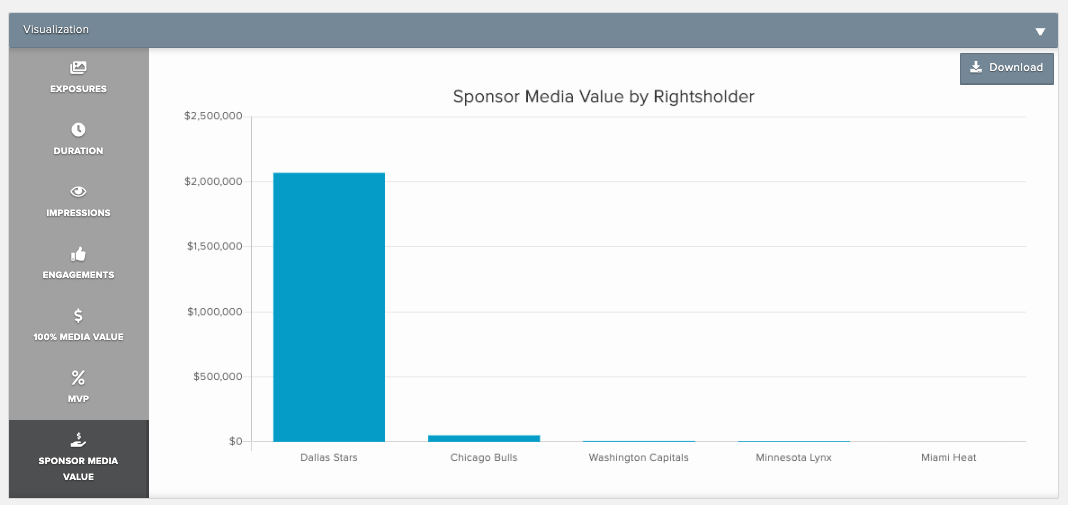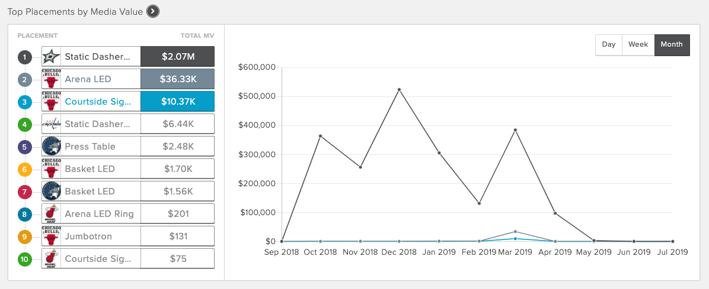How Brands Can Use Analytics to Maximize Performance Across Their Sponsorship Portfolio
Sep 02, 2020 Best Practices & Insights


The global pandemic has had a massive economic impact on many industries. Traditional sports sponsorship categories such as airline, travel, luxury goods, financial services and even beverage have been particularly impacted with reduced travel, entertainment and tightened consumer budgets. The impact has carried over to regional brands as well who regularly leverage local team sponsorships as marquee investments for driving awareness, engagement and/or hospitality,
Therefore it comes as no surprise that the challenging business environment has resulted in significant reductions in marketing spend. Brand marketers and corporate sponsorship teams are under more pressure than ever to prove the value of their sponsorships.
According to Forbes, nearly 60% of CMOs are being asked to communicate, measure, and grow the financial impact of their sponsorship portfolio today. This percentage will only continue to increase.
Fortunately, corporate sponsorship teams and marketers are able to measure near real-time performance across their sponsorship portfolio so that they can optimize activations and allocate resources to their top performing partners, assets and channels.
Let's dive into some of the ways brands can use their own sponsorship data to make smart near real-time decisions across their portfolio of partners.
Look at media value to maximize sponsorship effectiveness
Traditionally, brands have relied on mid season and end of season reporting from their rights holder partners to understand the value that was driven by a partnership.
However, more and more brands are taking a direct approach to securing their sponsorship data to track and evaluate performance on a more frequent basis. This allows them to take control of the narrative during negotiations and to better allocate spend across their portfolio. At a time when budgets are being scrutinized, the need to track the performance of every marketing channel, including sports sponsorships, becomes even more critical.
While there are many elements that need to be considered to truly understand the full impact of a sports sponsorship, media value equivalency, or what we call Sponsor Media Value, is an approach sponsorship professionals use to assess the relative value and exposure across a portfolio of partners and assets in order to maximize brand value and resources and aid in short and long term decision-making.
Evaluate media value by partner to allocate spend to top performers
Comparing the media value generated by individual sponsorship partners can help brands determine which partners are driving the most impact from an exposure, engagement and media value perspective.
They can see higher level metrics for any given partner, such as the number of exposures on broadcast and social media, the duration of those exposures, social media impressions and engagements, and sponsor media value.
Armed with their own media value data, brands can identify their most valuable sponsorship investments across various partners.

Through this analysis, they can confidently allocate investments towards partners that generate the most value and reach, and consider not renewing with partners that aren’t delivering. Or, work with underperforming partners to find new ways to create value.
Analyze asset performance to maximize value and prepare for partner negotiations
Brands can lean on their own analytics at the asset level to understand how individual signage locations are doing, and how their partners’ branded content social media campaigns perform. By knowing exactly which campaigns, social media posts and signage placements are driving value and which ones aren’t, they can work with partners to optimize low performing signage and social media content to improve visibility and exposure quality.

With performance broken out by specific placements and assets, brands can enter partner discussions with their own understanding of what elements of a sponsorship are working and which ones are not. This insight can be used to negotiate more favorable deals or to make improvements to increase performance of a specific asset before it is too late.
The ability to see real-time analytics is empowering brands to optimize investments and maximize the value they are getting without waiting until end of season reports.
Know how new assets and changes in production affect performance
When a brand sponsor is not receiving the value they had expected, rightsholders will often offer added value opportunities in the form of make-goods.
Without fans in stands and with many traditional experiential assets no longer available, properties have had to innovate to create new camera visible signage and digital assets for partners to drive additional value.
These new assets, along with changes in production and camera angles in fanless venues, have seriously impacted sponsor exposure and value and created some blind spots for brands as they have to wait on results.
But, when armed with their own analytics, brands can understand the sponsor media value that these assets are driving in real-time and ensure these new assets and their creative executions are helping them achieve their objectives.
In Summary
As corporate sponsorship teams are put under even more pressure to prove the value of sponsorships as a strong marketing channel, having their own data is a critical component.
With the ability to evaluate performance and assess the value of new assets such as stadium tarps and branded content campaigns, brands now have the power in their own hands and make real-time decisions that boost sponsorship ROI.
Objective and transparent insights are more important than ever, and it is often too costly and too late to wait for performance data from sponsorship partners. By taking a proactive approach to analysis, brands can ensure they are making these mission critical decisions on their own clock.
Want to learn more about how the Relo Metrics platform can help you optimize your sponsorship investments? Schedule a demo with an expert.
Written by Chris Loughlin
